The end of Everest adventure?
Twelve footfall pitches. That’s the size of the new mountaineering center, which the Chinese want to build on the Tibetan side of Mount Everest. According to the state newspaper “China Daily” the giant complex in the town of Gangkar, also known as Old Tingri, by the year 2019 is to be completed in 2019. The site is located about 60 kilometers northwest of Everest, on the travel route of expeditions that head to the highest mountain on earth. According to the “China Daily”, the mountaineering center will cost more than 100 million yuan (13.7 million euros). Accomodation and restaurants for mountaineers are planned, furthermore a helicopter rescue base, offices for expedition operators, repair shops for cars, motorcycles and bicycles as well as a mountaineering museum. The mountaineering scene is discussing the project on social media. Some see no less than the downfall of adventure on Everest. The Everest north side “will turn into a Chinese Disneyland,” says one. Another believes that a chair lift to the summit is only a matter of time. Dominik Mueller, head of German expedition operator Amical Alpin, doesn’t see why there should be outrage.
![]() read more
read more
Thundu Sherpa dies on Ama Dablam
Once again the earth trembled on Monday in the Khumbu region around Mount Everest. The tremors with an intensity of 5.4, with the epicenter 19 kilometers west of Namche Bazaar, normally would not have caused panic, because small to medium scale aftershocks are almost everyday routine in Nepal after the devastating earthquake on 25 April 2015: 475 tremors with an intensity of 4 or more have been registered since then. Major damage was not reported after Monday’s quake. But there was also sad news: Due to the tremors Lhakpa Thundu Sherpa lost his life while climbing the 6814-meter-high Ama Dablam.
![]() read more
read more
Time bomb Imja Tsho defused – for now
It’s like handling a water butt. The amount of rainfall is not manageable. If you want to prevent the butt from overflowing, you must drain the water. According to this model, the water level of Imja Tsho has now been lowered by a total of 3.40 meters over a period of two months. The glacial lake in the Everest region, which is almost 150 meters deep in some places, has steadily expanded over the last few years as a result of climate change, and has become a threat to the downstream villages, especially the nearby located Chukhung and Dingboche. A bursting of the natural dam at an altitude of about 5,000 meters could have devastating consequences. Soldiers from the Nepalese army were involved in the construction work for the canal, via which a total of four billion liters of water were drained. According to the government in Kathmandu, “an estimated 96,562 people, including tourists” – for this exact estimate Nepal earns an entry in the Guinness Book of Records 😉 – are expected to benefit from the project, which cost about three million US dollars and was funded by the United Nations. Daene McKinney, professor of Environmental and Water Resources Engineering at the University of Texas at Austin, was on site and has replied to my questions.
Professor McKinney, you were involved in the Imja Lake lowering project in the Everest region. How dangerous did you assess the situation before starting to drain the water?
![]() read more
read more
Ondra’s “Dawn Wall” coup: “Brilliant”
What a hotshot! The 23-year-old Czech Adam Ondra succeeded his free climb through the mostly vertical, partly overhanging “Dawn Wall” in the granite of El Capitan within only eight days. It was the only second free ascent of the rock route, which is regarded as the most difficult in the world. At the beginning of 2015, the Americans Tommy Caldwell and Kevin Jorgeson had “freed” the “Dawn Wall” after 19 days in the approximately 900-meter-high wall, a milestone of climbing history. They had been preparing for it for more than seven years. Ondra spent just two and a half weeks on El Capitan in Yosemite National Park. Kevin Jorgeson finds the success of the young Czech “totally badass”, as he wrote to the magazine “Rock and Ice”: “For Tommy and I, the question was whether it was even possible. We left lots of room to improve the style and Adam did just that! Super impressive that he was able to adapt to the Dawn Wall’s unique style and sort out so many complex sequences so quickly.” The German climbing scene is also thrilled.
![]() read more
read more
Mourning for Hassan Sadpara
Pakistan mourns for one of its most famous climbers. Hassan Sadpara died yesterday at the age of 53 in a military hospital in Rawalpindi. He suffered from blood cancer and tuberculosis. Hassan was the only Pakistani to date who climbed six of the 14 eight-thousanders. After having reached the summits of the five 8000ers in his home country, all of them without bottled oxgend, – K 2 (in 1994), Nanga Parbat (in 1999), Gasherbrum II and I (both in 2006) and Broad Peak (in 2007) – , he asked Asif Zardari, then President of Pakistan, for financial support to climb Mount Everest, the highest mountain in the world.
![]() read more
read more
“School up!” – They are really moving on
“School up!” is no longer just a donation campaign, but a project that is realized. Thanks to your donations, the first building of the new school is being constructed in the small village of Thulosirubari, some 70 kilometers east of the Nepalese capital Kathmandu. “Digging foundation has been started. Construction materials have been dropped on site,” Shyam Pandit wrote to me these days. Shyam is the liaison man of the German aid organization “Nepalhilfe Beilngries” in Nepal. “I was on-site and talked to the contractor. He said and committed, the building would be finished before the next raining season June/July 2017, except painting. They are really moving on.”
![]() read more
read more
Checkmate on Burke Khang
What I did not know is that also mountains can play chess. “What we did not know is that the Mountain, in a very clever chess move, shifted its defensive emplacements much lower on its flanks in anticipation of our 2016 assault,” Bill Burke writes. “We were caught completely off guard.” As reported, the 74-year-old American wanted to first climb Burke Khang, the mountain which was named after him. Burke’s first attempt a year ago had failed in the summit area of the 6942-meter-high mountain in the Everest region due to dangerous cornices. Now the insurmountable problems occurred at the lower Southeast Ridge.
![]() read more
read more
Burke wants to climb his mountain
“My mountain!” Bill Burke can say this, without anyone accusing him of hubris. Since 2014, the “Burke Khang” officially exists in the Everest region. The Nepalese government named the 6942- meter-high mountain in the Gokyo Valley after the US mountaineer. Bill Burke became a climber in the senior age after a successful career as a lawyer. Aged 67, he scaled Mount Everest from the Nepalese south side, aged 72, from the Tibetan north side. Four days before his second Everest coup, the government in Kathmandu announced that the still unclimbed almost seven-thousander near Mount Everest was now called Burke Khang. “I was never given a reason for this generous action“, said Bill a year ago in an interview on the website pythom.com. In fall 2015, Burke tried for the first time to climb the mountain which bears his name. The project failed just below the summit. Now the 74-year-old is taking a new run.
![]() read more
read more
Here’s to the non-eight-thousanders!
No matter whether you curse it, praise it to the skies or just use it pragmatically, no one will deny: the Internet has changed our lives and actually we can hardly imagine life without it. This also applies to mountain adventurers. Almost forgotten are the ancient times of Himalayan mountaineering, when expeditions were sent out, which were intended only to explore alpine destinations. Many of today’s best climbers prepare their projects on the screen – and make no secret of it. “I’ve looked a bit on Google Earth and more or less ‘found’ this mountain,” Austrian top climber Hansjoerg Auer told me before he set off to the almost 7,000-meter-high Gimigela Chuli East in Nepal. Along with his countryman Alex Bluemel, Auer wants to tackle the North Face of the mountain, which is located near the eight-thousander Kangchenjunga: “It’s not possible without a picture. Then I check out: How does the access look? Is it mega-dangerous or is the risk acceptable? What does the Base Camp look like?” Auer has not yet returned, but already now this fall season in the Himalayas once more proves: The mountaineering highlights are currently set even more on unknown five-, six- or seven-thousanders than on the eight-thousanders.
![]() read more
read more
Oswald Oelz: “Mountaineers are unteachable”
“I will climb until I am dead,” says Oswald Oelz, sitting opposite me recently at the International Mountain Summit in Bressanone. The 73-year-old native of Austria lives as a retiree in an old farmhouse in the Zurich Oberland region in Switzerland. “I have a farm with sheep, parrots, ducks, geese, chickens. I write, read a lot, climb. And I travel around the world.” Oswald called “Bulle” Oelz scaled Mount Everest in 1978, on the same expedition, during which Reinhold Messner and Peter Habeler climbed the highest mountain on earth for the first time without bottled oxygen. Oelz succeeded first ascents in the Alps, in Alaska, Jordan and Oman. Until 2006 he worked as chief physician at the “Triemli hospital” in Zurich. The professor also researched in the field of high altitude medicine.
Oswald Oelz, you are a mountaineer and a doctor, you have got to know both worlds. Time and again, there are fatalities in the high mountains due to high altitude cerebral or pulmonary edema. Has the climbing community learned nothing over the past decades?
![]() read more
read more



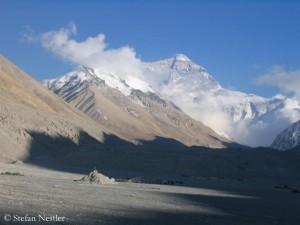

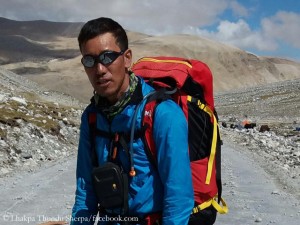
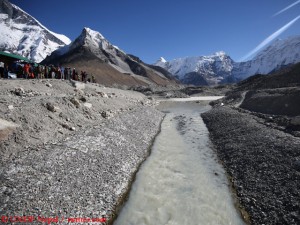

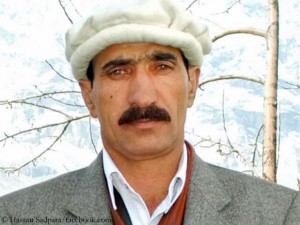
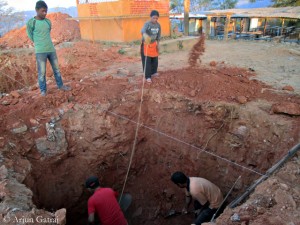
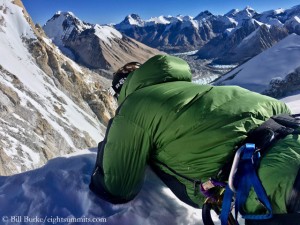
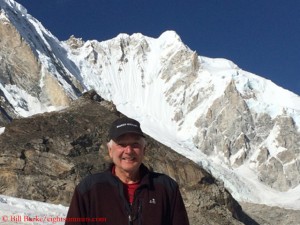
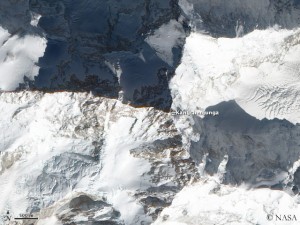


Feedback